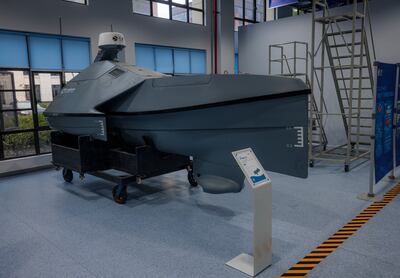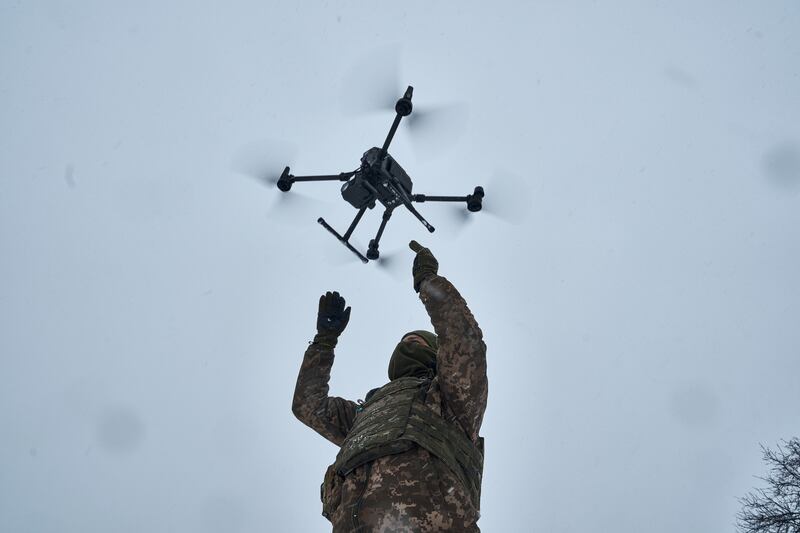Military powers large and small are seeking advanced autonomous systems for attack and defence, fundamentally altering the way force is exerted and efficiently levelling many previous overmatch capabilities on the battlefield.
The advancement of artificial intelligence has further improved the efficiency and accuracy of these systems – reinforcing the idea that embracing emerging technology will have a game-changing and outsized impact on military power.
Today’s challenges to global security aren’t just changing – they’re accelerating faster than ever before. Adversaries are highly adaptive and confront nations from land, air and sea as well as from the electromagnetic spectrum.
Many countries are facing an ever more lethal and asymmetric battlefield, with conflicts being conducted at increasing speed and reach, from close combat and throughout overseas theatres. With AI at the crux of modern warfare, it is critical that advanced technology companies and defence manufacturers invest heavily in research and development to innovate the next generation of efficient, accurate and interoperable systems that can ensure mission success.
The use of remotely piloted and autonomous aircraft has increased dramatically over the past two decades and has generated a debate on whether they are merely one more tool of defence or a revolution in warfare. Recent global conflicts have illustrated the advantage of using unmanned aerial systems to target air defence systems, deployed forces, strategic installations and armoured vehicles with relatively inexpensive air capabilities.

Designed to avoid enemy air defence systems by virtue of their compact size, they offer smaller and less-equipped states major advantages in conventional conflicts. Clearly, these have changed the character of warfare, and innovative uses of drones and loitering munitions demonstrate the evolutionary next step, with a low cost and a high reward potential.
As observed 20 years ago, the initial uptake of drones was slow as armed forces adapted their concept of operations and doctrines early in the product life cycle. Today, we can draw parallels to unmanned ground vehicle, or UGV, technology maturing, with numerous countries undergoing intensive testing and evaluation with plans to initiate larger-scale adoption and use.
According to market analysis from BIS Research, the global UGV market is expected to reach $9.06 billion this year. While the study found that the North American UGV market will pioneer its large-scale deployment, the market is certainly shifting towards European and Asian economies showing major demand for UGVs.
Such systems have the potential to transform operational efficiency and flexibility, and reduce human intervention in various skilled tasks like logistics, explosive ordnance disposal and intelligence-gathering – enabling hitherto impossible tasks.
While the maritime industry has been comparatively slow to adopt these technologies, the industry is certainly evolving and diversifying, and the rising popularity of unmanned surface vehicles – USVs – and unmanned underwater vehicles – UUVs – is prompting an increase in procurement and deployment from many navies and border security organisations around the world.
As R&D accelerates, these maritime unmanned vehicles will play a very significant role in protecting human operators, securing national waters and assisting naval missions. AI will certainly drive many advancements, enabling the degree of human control to gradually decrease.
With such developments, sea platforms will become a key technology for assignments in uncertain and dangerous marine environments, from reconnaissance missions to mine counter measures, border patrols and emergency responses.
Electronic warfare capabilities provide additional options for persistently competing with adversaries, while also enhancing and contributing to the capabilities of any platform using them across air, land and sea.
AI and machine learning are set to usher in a new generation of cognitive electronic warfare systems that learn how to categorise and respond to new threats, reducing the burden on combatants. For instance, deep learning will benefit from large amounts of data to create patterns for decision making.
Designed to support fast, low false alarm rate detection and identification of unknown threat signals, deep-learning techniques will be adopted in dense and congested electromagnetic environments, allowing for the rapid evaluation of situations as well as a fast automatic decision process. Only through vast and varied signal data can electronic warfare systems become exceptionally smart and, ultimately, automated.
Aircraft, ships and ground-vehicles forces today, both manned and unmanned, collect an abundance of information that contributes to the future of autonomous warfare. Processing and analysing that amount of data is a challenge, especially when factoring in multiple levels of security at which those systems operate.
However, tomorrow’s missions will leverage today’s data and every input is set to amplify the power of AI. As we advance further in the era of the Fourth Industrial Revolution, the key to effective overmatch lies in optimising the functionality and interoperability of land, sea, air and electronic warfare systems to rapidly turn data and intelligence into mission-winning action.
Integrating data from a wide range of sensors, such as unmanned surface vehicles or drones, will help deliver critical system support under severe time constraints, as well as recommend alternative courses of action to help human operators navigate a labyrinth of decision points.
Forces must be equipped to present adversaries with several operational or tactical engagement strategies, the employment of multi-domain formations and the convergence of capabilities across environments.
Ultimately, modern battles are a race against time, where the side agile enough to make swift decisions and move quickly to execution will prevail.
Interoperable autonomous and autonomy-enabled systems will greatly help to prevent hostilities, shape the security environment, protect critical infrastructure and safeguard borders and coastlines – thereby contributing to greater safety and security, which are critical for development and growth.





